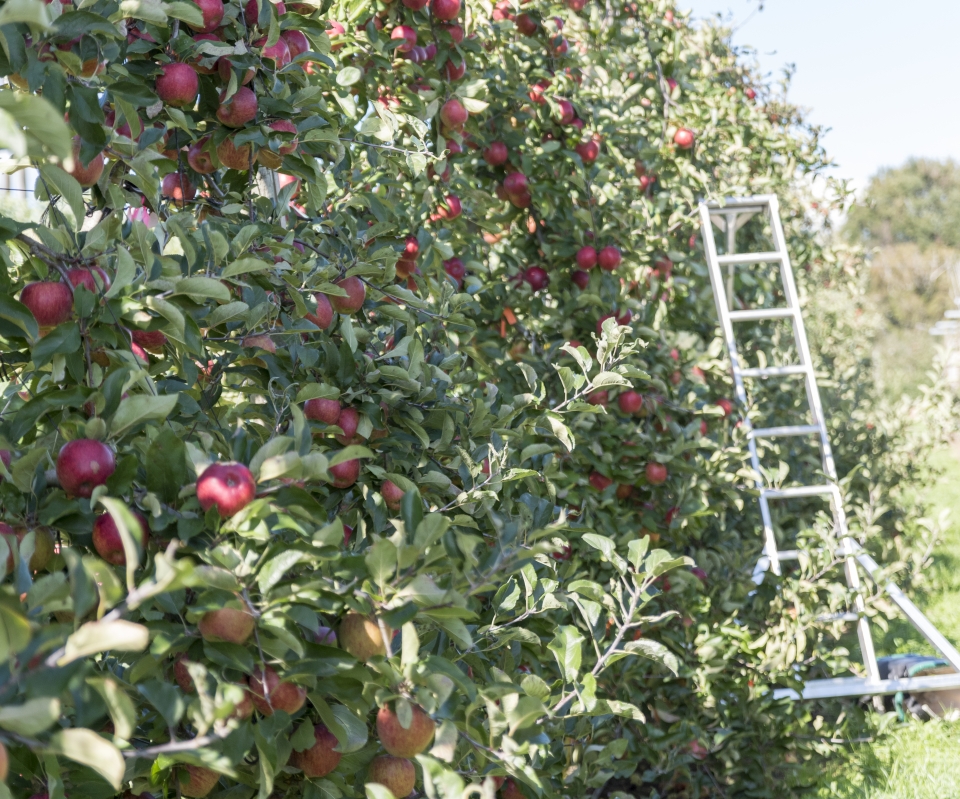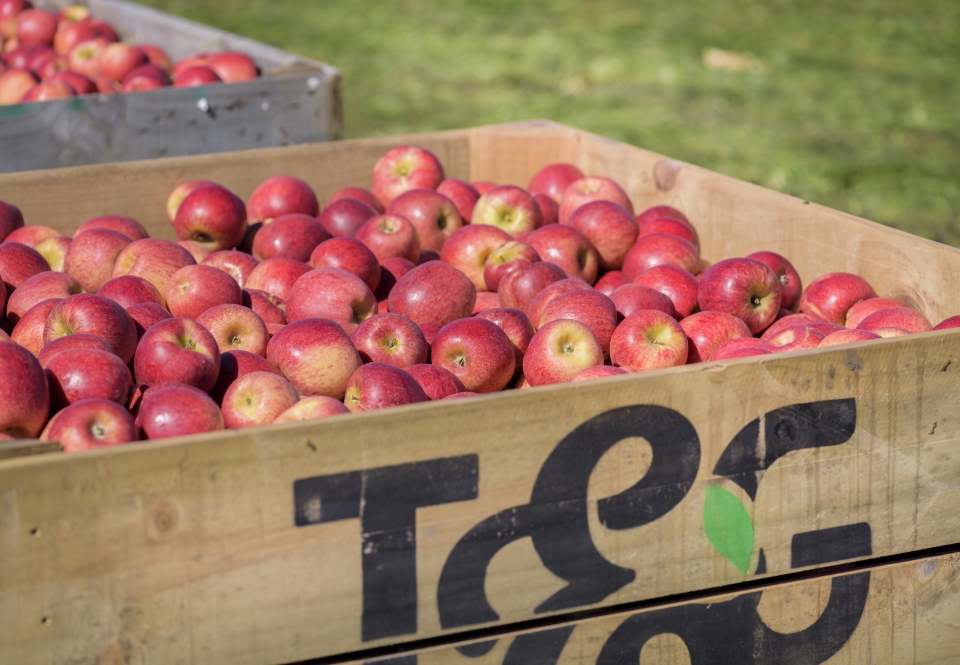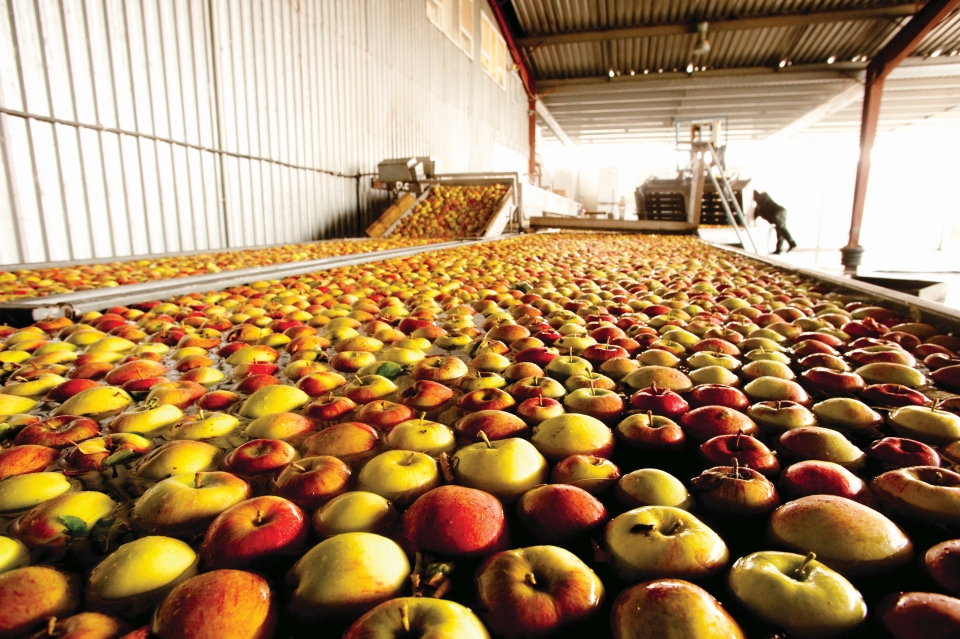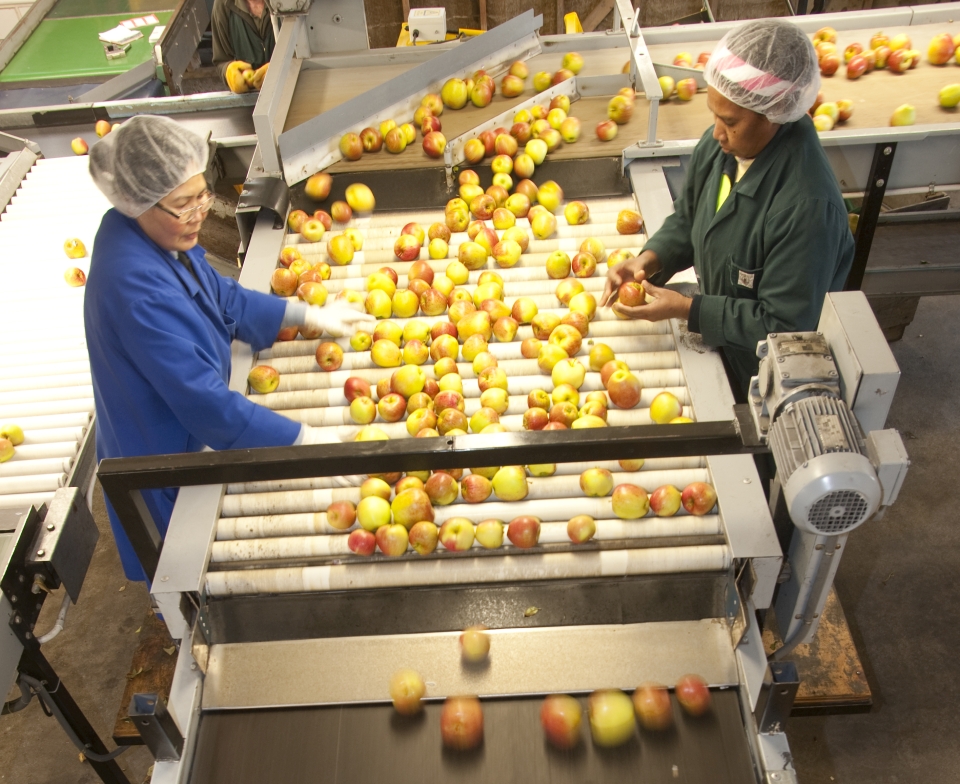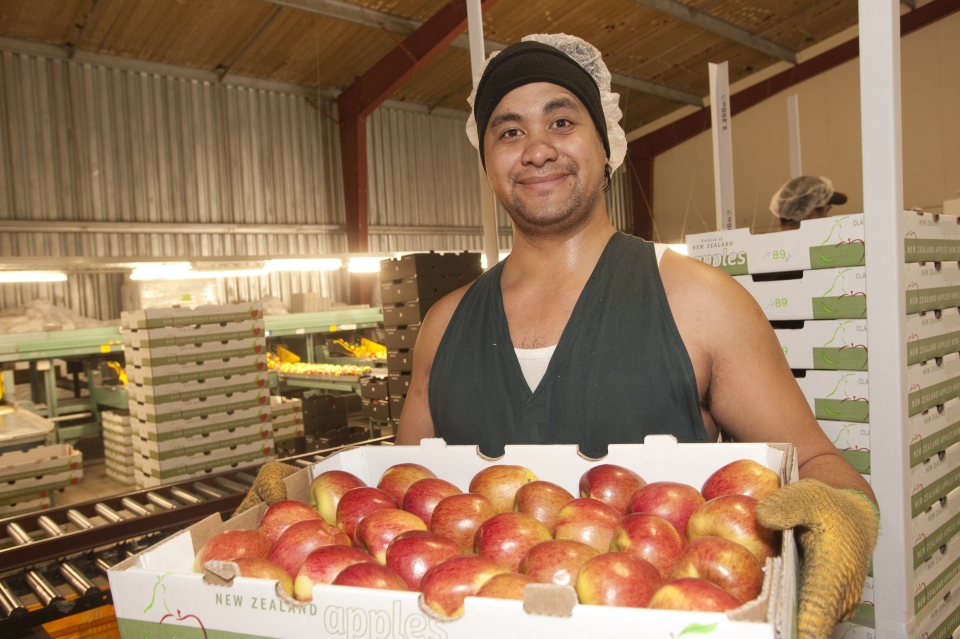Time of harvest
Growers decide when to harvest fruit by looking at how ripe the fruit is. If fruit is picked too soon it will not have the right taste and smell. If left on the tree too long, apples soften and may have a greasy skin.
Picking and packing
The apple-picking season lasts about three months. Each apple variety is ready for picking at different times. Export apples are usually picked between February and April.
People pick apples by hand. They collect apples in bags slung across their chest. Pickers empty fruit into larger wooden bulk bins, which hold around 400 kilograms. These bins are then moved to a cool store or a grading shed.
Apples are floated in water. This cleans the apples and then they are graded. People grade apples based on how they look. They remove any apples with bruises or marks. The apples then pass under electronic colour sorters. Apples are weighed before passing onto separate lanes for packing.
Apples are packed into cardboard boxes on fibre trays for protection during transport.
Pack house technology
Technology is helping apple growers to supply better-quality apples. Scanners can sort fruit. Machines remove apples with marks. Robotic pallet stackers and strapping machines pack apples without damaging fruit.
Storage and transport
Apples growers store fruit in cool stores to keep the apples fresh. By controlling oxygen and carbon dioxide levels apples will not age as quickly. Once fruit has cooled, it is kept at these low temperatures even during shipping. In the past, people sent apples from New Zealand to overseas markets in the bulk holds of ships. More fruit is now being sent in containers. Some of these containers have controlled oxygen and carbon dioxide levels.
Export markets
Key markets are the UK, continental Europe, the USA and South-East Asia. Exporters need to know about the rules other countries have about imports. There are set rules around pests and diseases, apple size, quality, and apple variety. To increase exports New Zealand's apple industry has worked on:
- developing new apple varieties
- increasing the number of apples produced on each tree
- packing and storage technology to reduce damage and ageing of apples
- reducing chemical residues.
New Zealand is able to grow fruit with some of the lowest levels of chemical residues in the world.
Plant and Food Research developed the Envy™ apple variety in New Zealand. Envy™ won the ‘favourite apple’ of 2017 in a US apple competition. This competition included 32 of the world’s most popular varieties. 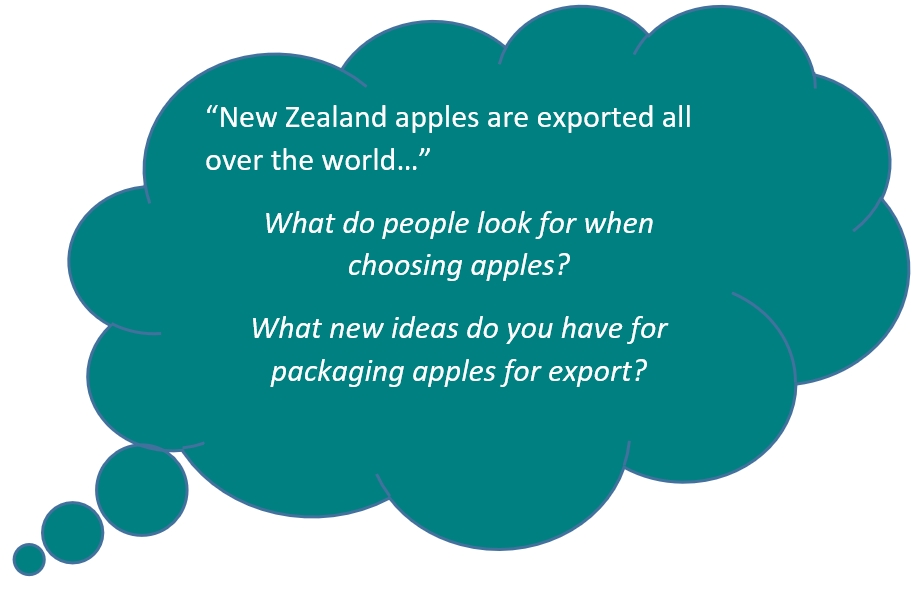
New Zealand market
New Zealand supplies most of its own apples, fresh or as juice. Some fresh fruit comes from the US, China and Australia. Canned apples mostly come from Australia.
Ready for a quiz? Try the "Storing and Exporting Apples" interactive activity.

